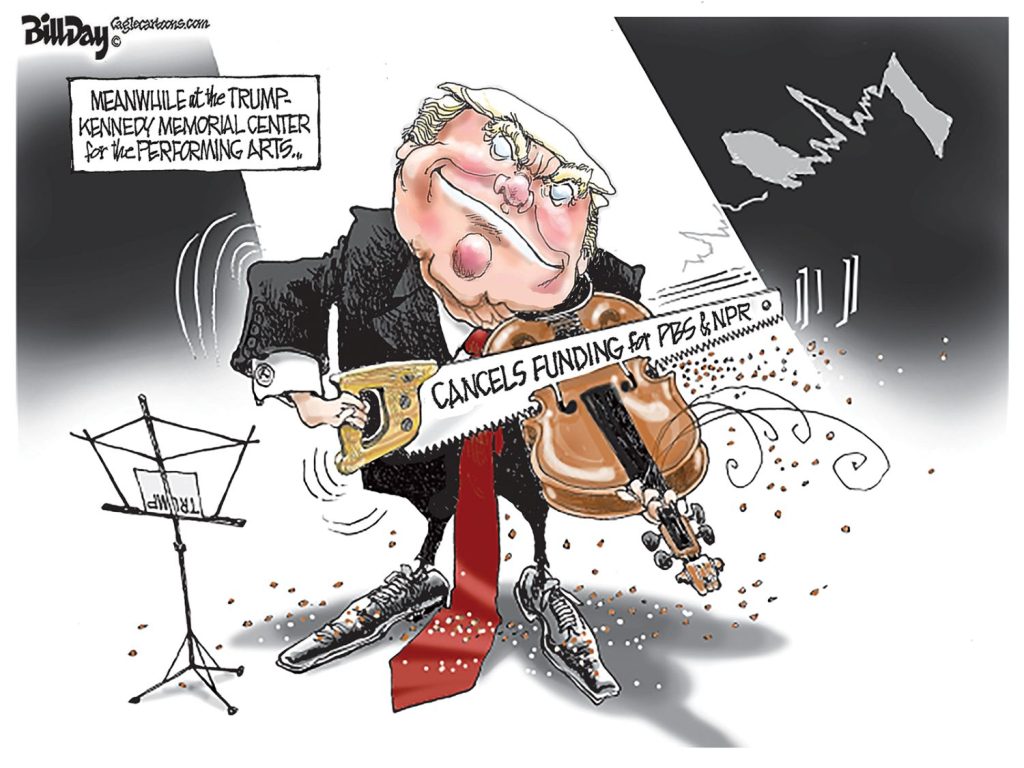Our media air waves and political squares are dominated by talk about all manner of challenging issues, but they are largely silent on the single issue that ultimately has the power to kill our region – the economic disparities that are devastating drags on our community.
It’s the elephant in the room but we seem largely focused on why there are peanuts on the floor.
Meanwhile, the gaping gaps in incomes, unemployment rates, and opportunity between whites and people of color pull down the economic vitality of this region, undermine its Gross Domestic Product, and trap too many people without the means for a reasonable standard of living.
Before we continue, let us emphasize again that we are talking about the MSA, not just about Memphis. That’s because the problems that are regularly topics of concern here are also found throughout the region.
A Tale of Two Regions
It’s one of the primary differences between our region and others. When we drive out of the core county in Atlanta, Indianapolis, Nashville, or Louisville, we drive into counties with dramatically higher median household incomes and higher educational attainment. But here, when we drive outside Shelby County and into the region, poverty remains a nagging problem, median household incomes do not dramatically increase, and educational attainment goes down.
For example, snuggled up south of Nashville-Davidson County is the “bedroom county of preference,” Williamson County, where median household income is $90,000, the median value of owner-occupied houses is $335,000, 53% of people older than 25 have bachelor’s degrees or higher, and the poverty rate is 5.7%. Those indicators are dramatically better than Nashville-Davidson County where median household income is $47,335, median value of houses is $167,500, 36% of people older than 25 has bachelor’s degrees are higher, and poverty rate is 18.5%.
Snuggled up south of Shelby County is our “bedroom county of preference,” DeSoto County, where median household income is $58,505, the median value of owner-occupied houses is $152,600 , 21.6% have bachelor’s degrees or higher, and the poverty rate is 10%.
Stating the obvious: DeSoto County is no Williamson County.
Its indicators are only mildly better than Shelby County, where the median household income is $46,250, the median house value is $132,700, 29% of people older than 25 have bachelor’s degrees or higher, and the poverty rate is 21%.
Breaking The Disparities
It’s those unexciting Memphis MSA numbers that result in a smaller, less robust consumer market here. Meanwhile, in Nashville, restaurants, concerts, and sports events are fueled by a region much more prosperous than ours and whose residents expand the Davidson County economy with their spending.
But all that is just context for the point of this post, which is about how economic disparities are baked into our MSA and how we pay a heavy price as a region for our inability to break the link between people of color and inequality. If nothing changes, things will get much worse, according to projections prepared by Woods & Poole Economics Inc. for PolicyLink.
From 1980-2010, the number of people of color went from 42 percent to 53.8 percent of the total population. By 2040, 66.1 percent of the population will be people of color.
From 2000-2010, the Latino population had the highest growth rate at 130.3 percent and the White population had the lowest at -2.7 percent. African American population grew by 14.6%, Asian population grew by 53.3% and mixed/other grew by 49.4%.
The Imperative: Break The Link Between Color And Disparities
Here’s the percentage of the population projected to be people of color in 2040 (2010 percentages are in parentheses)
66.1% – Memphis MSA (53.8%)
79.4% – Shelby County (61.3%)
46.8% – Desoto County (29.6%)
68.6% – Crittenden County (54.8%)
26.4% – Tipton County (23.3%)
80.8% – Tunica County (76.9%)
28.4% – Fayette County (31.8%)
The Memphis region has always been on the leading edge of the movement toward an American defined by its diversity. While the majority of United States population will be people of color in 2040, our MSA will be leading the pack as a majority minority region. By 2010, the Memphis MSA was already characterized by its diversity with 53.8% of its population being people of color, and that demographic wave is projected to increase to 66.1% by 2040.
By 1980, 42% of the population of the Memphis MSA was people of color; 1990, it was 42.8%; 2000, it was 48.1%; 2010, it was 53.8%. It is projected to be 57.8% by 2020 and 62.1% by 2030.
People of Color Percentages
While two out of three people in the Memphis MSA will be people of color, there are other MSAs where the percentage is even greater, but they are largely in metros where growing Latino population is driving their diversity. In fact, for cities where African Americans are the dominant indicators of diversity, the Memphis MSA may likely have the largest percentage.
Projections for 2040 for selected MSAs for percentage of population that will be people of color:
79.5% – Los Angeles MSA
76.9% – Miami MSA
75.2% – Houston MSA
69.6% – San Antonio MSA
66.4% – Orlando MSA
66.1% – Memphis MSA
59.6% – Atlanta MSA
57.7% – Dallas MSA
53.6% – Phoenix MSA
53.0% – New Orleans MSA
45.8% – Birmingham MSA
42.6% – Detroit MSA
39.3% – Nashville MSA
23.5% – Chattanooga MSA
19.0% – Knoxville MSA
The Battle Lines Are Drawn
Back to our main point, if the Memphis region is unable to change the economic disparities at the heart of our economy, our economic prospects will be crippled at the exact moment that the international economy will become ever more complex and challenge our ability to compete.
At the time of the legendary Memphis Jobs Conference in 1979, the fact that the income for a white Memphian was twice that of a black Memphians was acknowledged as a discrepancy that limited our potential for the future and demanded concerted attention. That future is today, and the prediction has been made manifest.
In 2012, the median income for workers of color remained $7 less than the median wage for white workers – $22 to $15. Today, 72% of white workers earn at least $15 an hour but only 46% of people of color. Those are the same levels as 1980, which indicates two things: 1) the structural erosion of middle class incomes and 2) the faster pace of low-wage job creation. In fact, from 1990 to 2012, the number of low-wage jobs in our MSA increased 39.5%, compared to 9.5% for middle wage jobs, and 18.9% for high-income jobs.
In other words, the ultimate challenge for the Memphis SMA is to disrupt trajectories that appear to be relatively locked into place at this time. More than anything, the trend lines for the past 35 years indicate that at best we have been running in place and at worst, we are losing ground to our peers.
According to calculations by Zach Hoyt, the Memphis MSA Gross Domestic Product per capita in 2012 was $49,324; however, in 2005, it was $51,894. Comparing the per capita GDP of Memphis MSA with Birmingham MSA, Little Rock MSA, Louisville MSA, Nashville MSA, New Orleans MSA, Oklahoma City MSA, and St. Louis MSA, Memphis’s GDP was ranked #2 in 2001, #3 in 2005, #6 in 2010, and it is now last – #8.
That decline in per capita GDP is one of the most telling indicators of the economic challenges facing our region and reflects our losing battle to close our economic disparities. If that disparity could be closed, the GDP would be $20 billion higher.






This is very revealing. No wonder Nashville and its entire MSA is totally booming with such tremendous growth and development. And it’s not just Williamson county, it’s also Wilson and Sumner counties. We were up there last week and the new construction is everywhere with at least 30 cranes dotting the skyline and skyscrapers going up all over Nashville. In contrast all we seem to have going on in Memphis is a Cheesecake Factory.
And also with our high poverty levels and declining GDP it’s no wonder the Memphis airport is a ghost town with hardly any flights. People here in the Memphis MSA just cannot afford to fly.
The two comments above are simply continuing the SCM article with some exaggeration. I would like to see concrete suggestions on how to reverse our trend in future articles.
I think one major reason for our decline is a lack of good political leadership. While Nashville had progressive leadership in the 60’s, squelching racial problems and passing consolidation, we had two mayors, one a buffoon and the other a racist who ended up giving us one of the worst reputations in the country after 1968. Then we had two after him who presided over steady decline. Herenton showed promise at first but lost his following with his controversial statements and combative style. The voters can decide whether the present mayor deserves re-election on October 8 but he did inherit a major mess and it will take a while to recover.
There is a huge lack of strong leadership in Memphis that hurts the city and region. All of our recent mayors have been disasters and done nothing to stop the steady decline of the city. Nashville just elected a very progressive female mayor in Megan Barry who undoubtedly will continue that city’s vibrant economic and population growth. The candidates here in Memphis are embarassment and instill no confidence. One thing is certain: The problems of Memphis will only get worse.
Jesus Christ people… gloom and doom. The airport is not a ghost town, things here are NOT this bleak. I’m not living in a bubble, but God damn it- stop comparing us to Nashville. Every city is different. Memphis is as a whole recovering, albeit slow, but it IS getting better. Some people just want to see this city burn.
I liked this article. The focus on income does make it slightly gloomy. But it is interesting that the local economy has not in the past and cannot today produce jobs that provide a living wage for a greater percentage of the whole community. Part of our problem is the old rust belt issue. We have a large percentage of our workforce that has the skill set, the educational level, and the class orientation for industrial factories. If unionized, those factories like Firestone tire and International Harvester provide decent lives for the this strata of the working population. But those factories and the others like them are gone. So we have a large portion of the population that bounces from job to job, never finding what they really need for a stable semi-affluent life.
Interestingly, logistics and health care — both of which have grown a lot over the past couple decades — have not filled the gaps. Logistics does not provide enough full-time stable jobs and health care is strange industry — with both very good and very bad jobs.
I really liked the comments on the peripheral counties — I keep forgetting they are so important to the overall health of the core county — Shelby.
Michael: As we told a TV reporter recently, no city in the Southeast can compare to Nashville, but we could have done the same thing with the counties next to Atlanta, Louisville, and Indianapolis. But you seem to have missed the point. It’s not about Memphis – it’s about the region. And to address these problems requires regional collaboration and cooperation, the setting of economic development priorities, protection of our precious water resources, building on the greenprinting plan that brought disparate communities together, but most of all, it requires the entire region to get serious about attracting living wage jobs and developing a workforce that compete in the knowledge economy.
Mark Massey is not conducive to a goos conversation.
…good conversation.